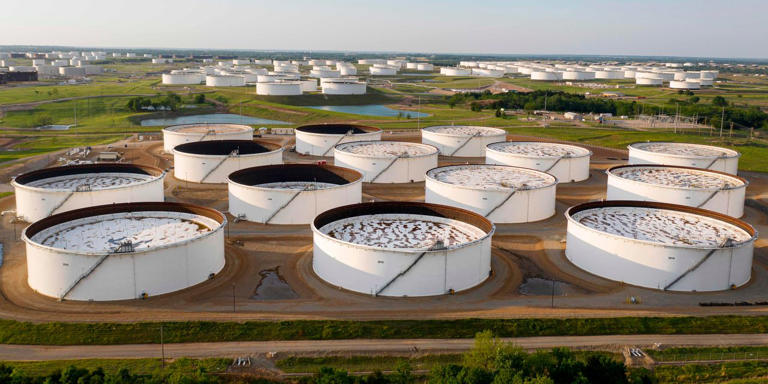U.S. oil futures settled higher on Thursday, following official data showing a fourth consecutive weekly increase in U.S. crude inventories, albeit smaller than anticipated by most market participants. Natural gas futures, however, closed lower after Wednesday’s rally, during which prices recorded their largest daily percentage gain since July 2022.
Key Takeaways:
- West Texas Intermediate crude for April delivery rose 70 cents, or 0.9%, settling at $78.61 a barrel on the New York Mercantile Exchange.
- April Brent crude, the global benchmark, added 64 cents, or 0.8%, reaching $83.67 a barrel on ICE Futures Europe.
- On Nymex, March gasoline climbed by 2.1% to $2.33 a gallon, while March heating oil rose by 1.7% to $2.75 a gallon.
- However, March natural gas declined by 2.3% to $1.73 per million British thermal units, following a 12.5% surge in the previous session.
Oil supplies
“Oil markets continue the battle royale between geopolitical concerns and fundamentals,” commented Matt Smith, lead oil analyst for the Americas at Kpler. He added, “Deep refinery maintenance rolling on from the U.S. into Europe and then China in the coming months means if it weren’t for geopolitical tension, prices would be lower.”
Oil futures concluded near the upper end of the price spectrum observed over the past three weeks, receiving an additional push after the Energy Information Administration reported a 3.5 million barrel increase in U.S. commercial-crude inventories for the week ending Feb. 16, reaching a total of 443 million barrels.
“Despite robust crude exports, ongoing refinery maintenance and firm crude imports have contributed to another build in crude stocks,” stated Smith.
The American Petroleum Institute reported a steeper climb in crude inventories of 7.2 million barrels late Wednesday, according to a source familiar with the data.
On average, analysts had anticipated a 4.4 million barrel increase in the EIA report, released a day later than usual due to Monday’s Presidents Day holiday, according to a survey conducted by S&P Global Commodity Insights.
Analysts anticipated refinery operations to remain subdued for the remainder of the month as BP Plc’s Whiting, Ind., facility remains closed due to an unexpected power outage, while several other refineries continue with maintenance. The EIA reported a slight uptick in U.S. crude-oil refinery inputs by 31,000 barrels a day, averaging 14.6 million barrels a day last week.
The EIA report also disclosed weekly supply decreases of 300,000 barrels for gasoline and 4 million barrels for distillates. S&P Global Commodity Insights analyst survey forecasts indicated inventory drops of 3.2 million barrels for gasoline and 1.6 million barrels for distillates.
“Given low refinery runs, it is not surprising to see declines in product inventories — although implied demand for both gasoline and distillates is trailing year-ago levels on the four-week moving average,” remarked Smith.
U.S. oil production remained unchanged in the latest week, maintaining a record level of 13.3 million barrels a day, as per the EIA. Meanwhile, crude stocks at the Cushing, Okla., Nymex delivery hub increased by 700,000 barrels to 29.5 million barrels.
Natural Gas retreats
Natural gas futures concluded lower on Thursday following a significant bounce of 12.5% on Wednesday, marking their largest one-day percentage gain since July 7, 2022. The surge was prompted by a reduced production outlook from Chesapeake Energy Corp., a major shale producer.
On Thursday, the EIA reported a 60 billion cubic feet decline in U.S. natural gas supplies in storage for the week ending Feb. 16. Analysts, on average, had anticipated a decline of 65 billion cubic feet, according to S&P Global Commodity Insights.
However, the EIA data included a downward revision to previously reported stocks for the week ending Feb. 9, with the EIA revising the total stock for that week to 2.53 trillion cubic feet, down from 2.535 tcf.
The report was deemed “another bearish withdrawal,” as the weekly supply decline was more than 100 bcf less than the five-year average for this time of the season, according to Troy Vincent, senior market analyst at DTN. Natural gas stocks are approximately 12% higher year over year and just over 22% higher than the five-year average, he noted.
